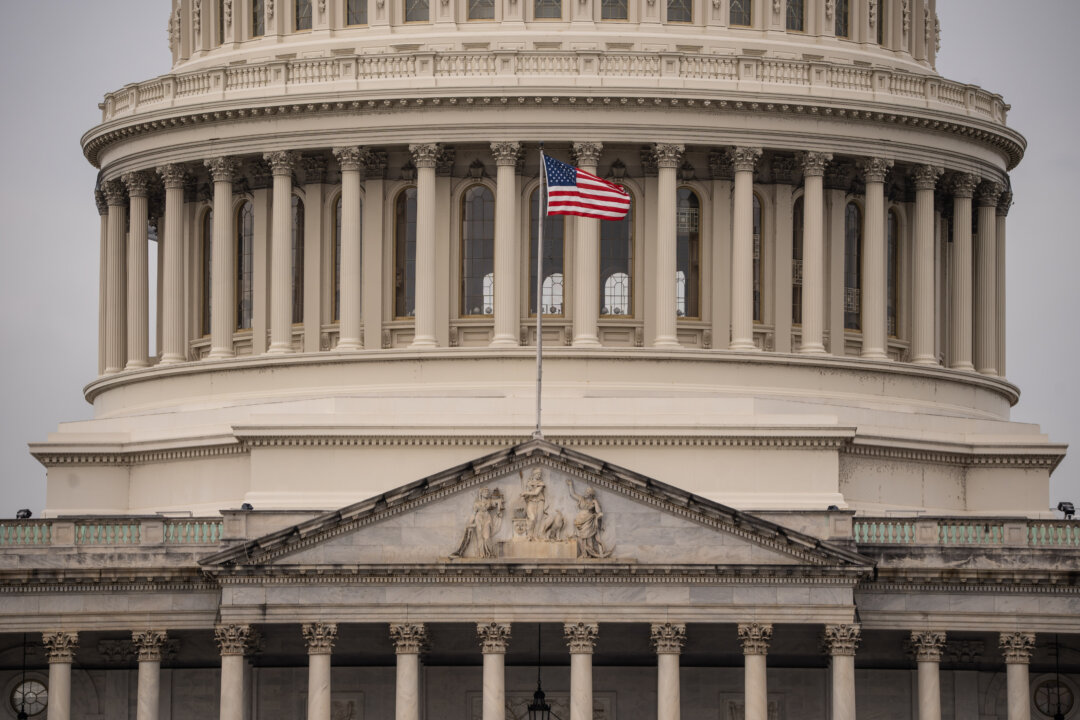WASHINGTON—The U.S. Senate in the early morning hours of April 5 approved the budget blueprint to advance President Donald Trump’s agenda after a marathon voting session.
Under the rules of the reconciliation process, which is being used to pass the sweeping package, all amendments must be considered—leading to voting sessions that last well into the night, known as a “vote-a-rama.” The all-night session included votes on Democratic amendments that targeted Trump’s tariffs, the potential impact of the budget bill on the federal deficit, and seeking to limit tax cuts for the wealthy in the bill. They all failed.

With its passage by the Senate, the budget resolution—which resulted from weeks of bicameral negotiations—heads to the House. Both chambers will need to pass the measure to move on to the next stage of the reconciliation process. Most of its provisions aligned with what was expected from the package, including tax policy, federal funding for energy, defense, and the border, and spending cuts.
Its centerpiece is making permanent the income tax cuts included in the Tax Cuts and Jobs Act of 2017, which are currently set to expire this year. Under the Byrd Rule, nothing in a reconciliation bill can be made permanent if it would cost the government money after a decade. To align with this rule, Graham declared his authority to use “current policy” as the baseline to calculate the bill’s long-term impact.
Aside from that, the package includes instructions for how much funding each chamber should provide for various purposes. At this stage in the process, those numbers are still allowed to differ to provide each chamber flexibility in drafting the legislation. The bill orders the Senate to put up $150 billion for defense, while the House is ordered to provide $100 billion.
It also calls on the House and Senate to allocate $90 billion and $175 billion, respectively, for homeland security. Speaking in support of the bill on the floor, Graham said this funding would be used to reduce the influx of fentanyl, finish the border wall, and provide more detention bed space for deportees. That issue has already been the rallying point of Democrats’ opposition to the package.
In a floor speech against the resolution, Senate Minority Leader Chuck Schumer (D-N.Y.) said it would “eviscerate Medicaid.
” Concerns about the budget’s impact on Medicaid have also circulated among moderate Republicans. For some purple district Republicans—particularly those in states like New York and California—any cuts to the entitlement could be political suicide. The debt ceiling describes the top amount of debt the federal government can take on.
For many Republicans with a focus on the national debt, these measures are inherently unpopular. The Senate resolution instructs the House to raise the amount by $4 trillion, and permits a raise of up to $5 trillion in the Senate version. In the Senate, this was less of an issue, being a dealbreaker only for Paul.
However, in the House, the $5 trillion top line could pose greater challenges. To unlock the process, both chambers of Congress must pass an identical blueprint. The Senate resolution, which now goes to the House for consideration, resulted from weeks of negotiations between the two chambers.
With 220 seats to Democrats’ 213, House Republicans can spare just three defections and still pass the budget—a tall order for a package that could alienate both moderate Republicans and conservatives for different reasons. Should the blueprint pass the House, work will be sent to committees to draft the legislation. The final package passed by both chambers must be identical to make it to Trump’s desk.
.
Politics

Senate Passes Trump’s Agenda Budget Blueprint After Late-Night Voting Session

The resolution now heads to the House, where there are already warning signs that the blueprint could face hurdles.















